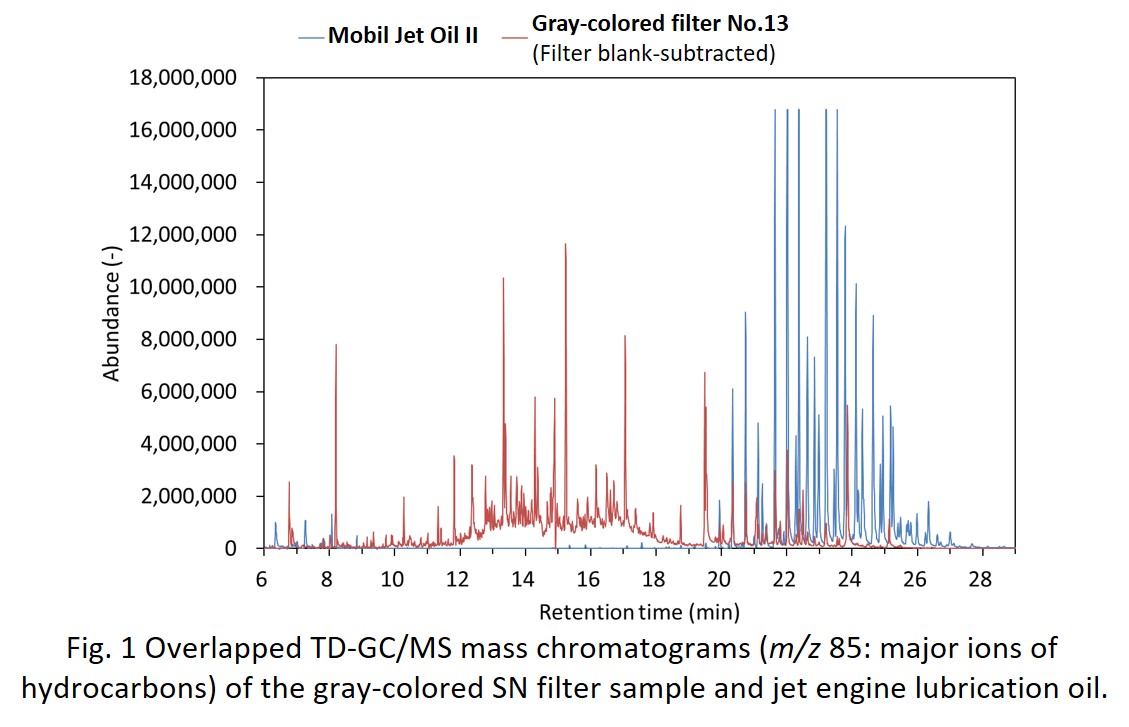Organic analysis of aircraft engine smoke number filter samples with thermal-optical carbon analysis and thermal desorption–gas chromatography/mass spectrometry
From atmospheric measurement near an airport runway [1], we have recently found that jet engine lubrication oil [2] is a key component of aircraft exhaust nanoparticles [3]. However, it is uncertain where oil nanoparticles are emitted or formed in aircraft jet engine exhaust. In this study, we aimed to examine the organic composition of jet engine exhaust bulk particulate matter (PM) collected with a smoke meter, especially to see whether those PM samples have lubrication oil signature. The smoke number (SN) paper filter samples, collected at SR Technics, Zürich Airport, Switzerland in 2019–2020, were used. From carbon analysis, the volatile organic carbon (OC) concentrations (μgC cm-2-filter) in the gray-colored SN filter samples were very low but significantly higher than the blank filters. The roughly estimated volatile OC concentrations in the undiluted exhaust was 1,200 μgC m-3 for the gray-colored samples. In the chromatograms of thermal-desorption gas chromatography/mass spectrometry (TD-GC/MS), oil marker compounds (tricresyl phosphate and likely fatty acid esters of pentaerythritol) were clearly and consistently detected from the gray-colored samples, and were not detected from the blank filters (Fig. 1). The mass spectra of the oil marker compounds in the gray-colored samples matched well with those of the jet engine lubrication oil. From the gray-colored samples, strong signals of C24–C30 n-alkanes and some polycyclic aromatic hydrocarbons (PAHs) were also detected.

This work was supported by the Environment Research and Technology Development Fund (JPMEERF20205004) of the Ministry of the Environment, Japan, the NIES Research Funding (Type B), and the Scientific Exchanges grant of Swiss National Science Foundation (IZSEZ0_198063). The work of the Swiss team was funded by the Swiss Federal Office of Civil Aviation (FOCA) projects AGEAIR SFLV 2017-030 and AGEAIR 2 SFLV 2018-048.
[1] Takegawa, N., Murashima, Y., Fushimi, A., Misawa, K., Fujitani, Y., Saitoh, K., Sakurai, H., Atmos Chem Phys, 2021, 21, 1085-1104. [2] Saitoh K., Fushimi A., Sera K., Takegawa N., Int J PIXE, 2018, 28, 85-92. [3] Fushimi A., Saitoh K., Fujitani Y., Takegawa N., Atmos Chem Phys, 2019, 19, 6389-6399.